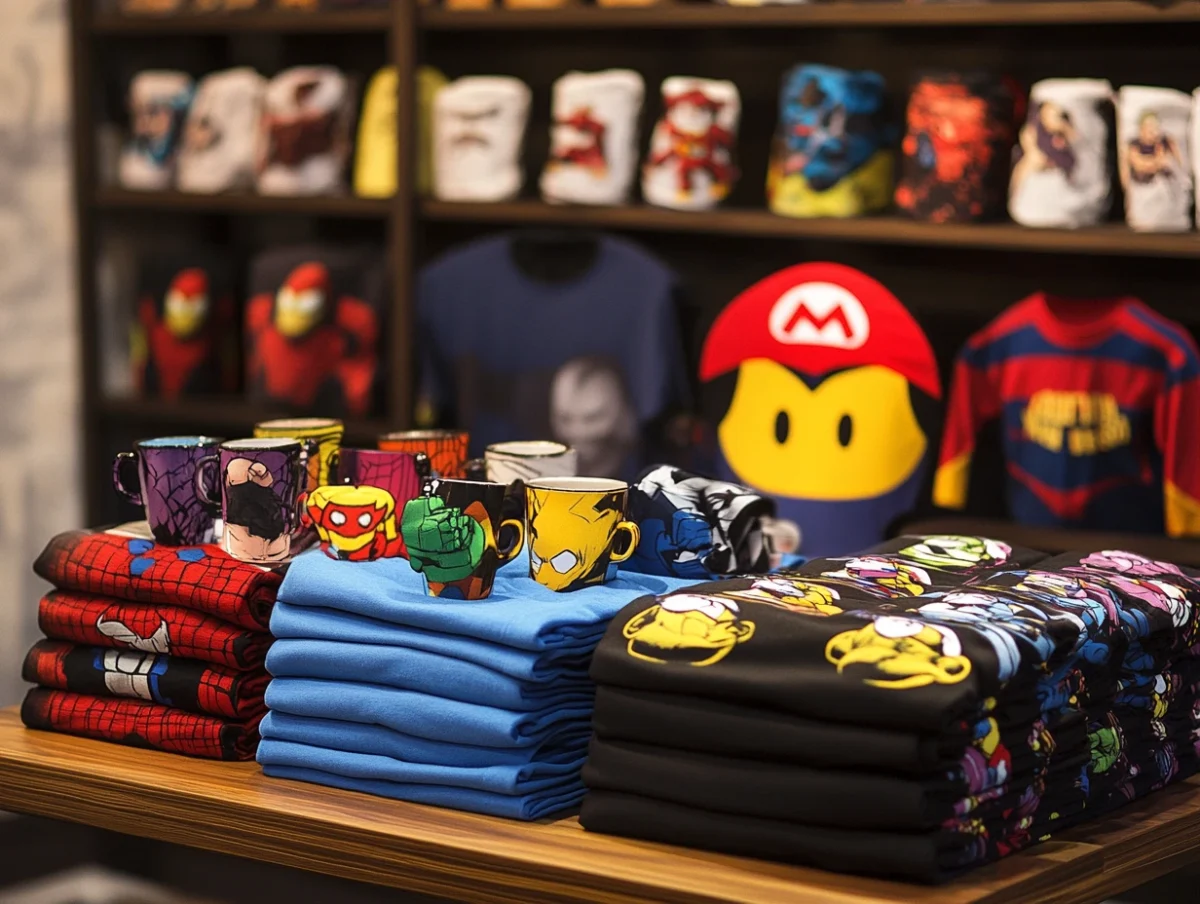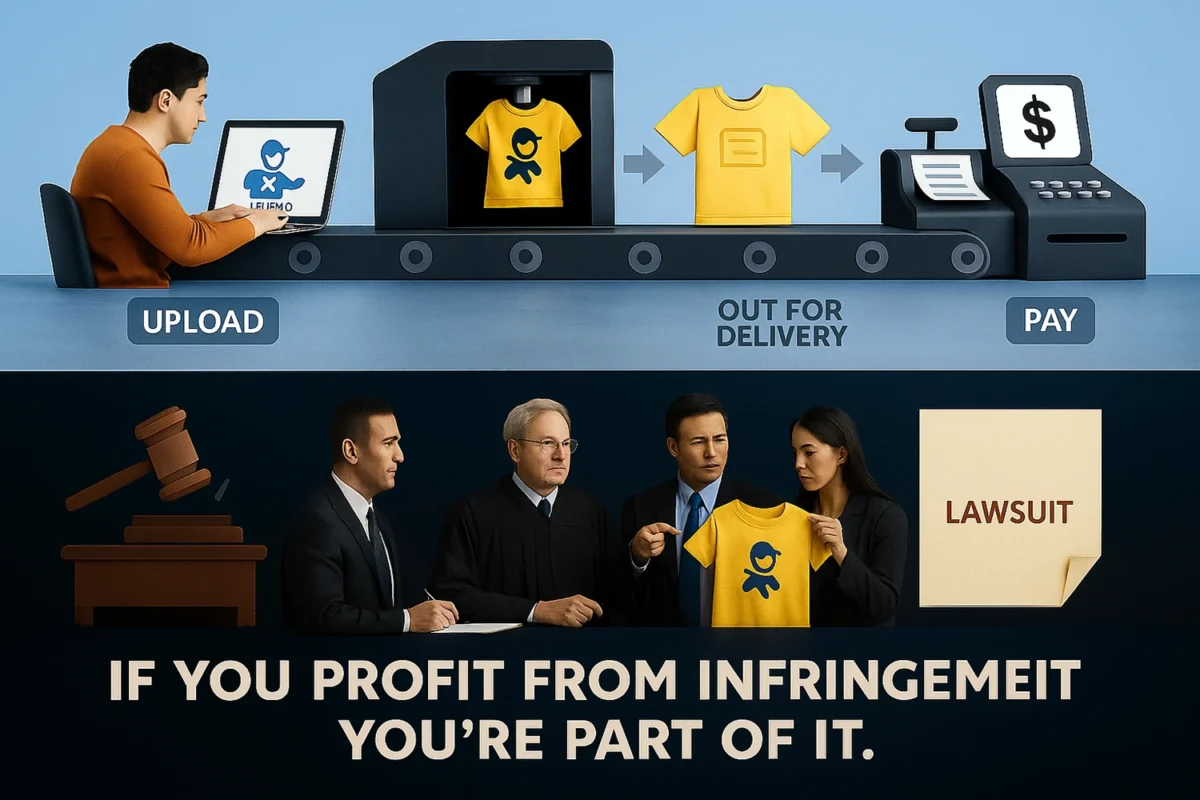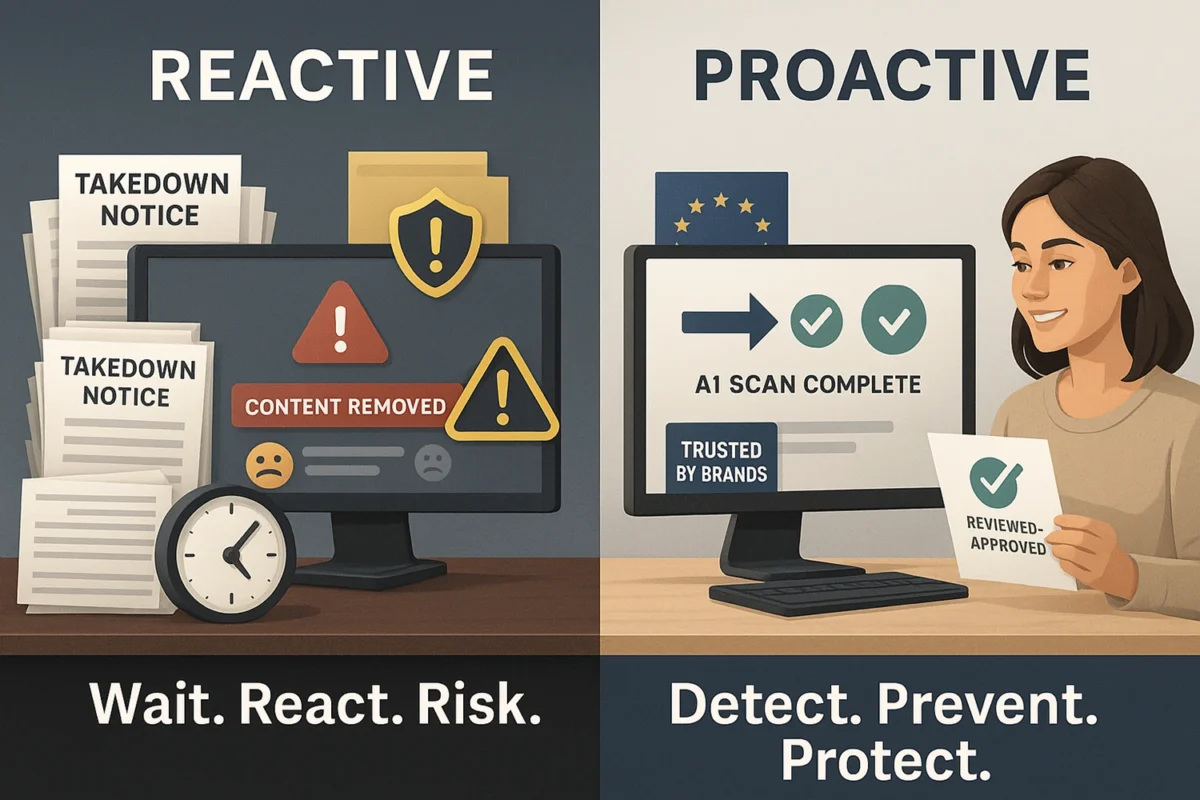Platform Liability Vs. User Liability: Where The Line Is Drawn
One of the most common defenses used by platforms when facing IP infringement claims is:
“It wasn’t us—it was the user.”
But courts aren’t always buying it.
In the age of user-generated content and on-demand commerce, the line between user action and platform responsibility is blurring fast. If your platform hosts, fulfills, promotes, or profits from content, you may be more exposed than you think.
Here’s how to tell where liability falls—and how to stay on the right side of the line.
A platform can be held directly or indirectly liable for infringement when it:
1. Platform Liability: When the Host Becomes the Actor
- Knows about infringing content but fails to act (actual or red flag knowledge)
- Controls or facilitates the sale, promotion, or fulfillment of infringing goods
- Profits from the content (e.g., takes a commission on sales)
- Appears to be the primary brand or vendor to customers (even if the design came from a user)
This liability can take the form of:
- Contributory infringement – helping or enabling infringement
- Vicarious liability – benefiting from it while having the ability to stop it
Courts have ruled that platforms are liable not just for hosting, but also for the ecosystem they create around the content.
2. User Liability: Creators, Sellers, Uploaders
Users are still the first line of liability—especially when they:
- Upload protected IP (art, logos, slogans) without permission
- Claim ignorance or fair use without a legal basis
- Replicate or remix known characters or brands
- Upload variations of the same infringing design multiple times
However, many users are:
- Anonymous or hard to pursue legally
- Located in jurisdictions where enforcement is difficult
- Unaware of what constitutes infringement
Rights holders often skip users entirely and go straight to the platform, especially when the infringement is widespread or ongoing.
3. Main Aspects That Differentiate Liability
| Factor | Platform Liability | User Liability |
| Who uploads the content? | No | Yes |
| Who profits from the content? | Yes, if commission/sales fee | Yes |
| Who controls distribution? | Yes, if auto-fulfilled/promoted | Yes, if user markets it |
| Who has knowledge? | Yes, if actual/red flag | Yes |
| Can they act to prevent it? | Yes | Yes |
The more control and profit a platform has over infringing content, the more likely it is to be considered legally responsible.
4. Terms Of Service: Shield or Weakness?
Having clear Terms of Service (ToS) and Content Policies is a legal must—but they’re not bulletproof.
ToS clauses that say:
- “We are not responsible for user content”
- “Users agree not to infringe”
- “We reserve the right to remove any content”
…are helpful, but not enough if:
- You don’t enforce them
- You ignore violations
- You benefit financially from violations
- You lack moderation tools or clear processes
Courts look at what you actually do, not just what your policy says.
5. Case Examples: When Platforms Crossed the Line
Redbubble (Australia & U.S. Cases)
- Allowed infringing art (e.g., Pokémon, Hells Angels) to be uploaded, printed, and sold.
- Fulfilled orders and handled customer service.
- Court ruled Redbubble was more than a passive host—it was involved in commercial activity.
Teespring
- Faced lawsuits from brands like NFL and Harley-Davidson.
- Failed to enforce repeat infringer policies.
- Allowed keyword manipulation to avoid detection.
- Repeat failures to act = higher liability exposure.
Amazon (Brand Registry Model)
- Invested in proactive brand enforcement and AI-based filtering.
- Built internal IP complaint system and gave rights holders direct control over listings.
- Demonstrated good faith effort to detect and remove infringement.
Responsibility Rests with Who’s in Control
The legal line between platform and user liability isn’t theoretical anymore—it’s being defined in courtrooms around the world.
If your platform profits from, promotes, or fulfills infringing content, you must:
- Monitor and moderate proactively
- Enforce your ToS and content guidelines
- Implement detection systems that go beyond keywords and logos
- Remove repeat infringers and track policy violations
Tools like VISUA’s Infringio help platforms shift from reaction to prevention—and prove that they’re doing their part.
Because in IP compliance, doing nothing is the fastest way to become liable.
Want to stay on the right side of platform liability? Want to see how Infringio helps detect IP issues before they go live? Book a demo with VISUA today.
Disclaimer: Not Legal Advice
This content is provided for informational purposes only and does not constitute legal or professional advice. The information reflects our understanding as of the date of publication and may not apply to every situation or jurisdiction. You should consult qualified legal counsel for advice tailored to your specific circumstances. Any actions taken based on this content are at your own risk. Neither VISUA nor its affiliates accept liability for any losses or damages arising from the use of this information.
Book A DemoRELATED
Redbubble, Teespring, and the Lessons of IP Enforcement Failures
Reading Time: 3 minutesPrint-on-demand (POD) platforms empower creators to design and sell products without holding inventory. But with that power…
BlogHow AI Is Changing the Game in IP Enforcement
Reading Time: 2 minutesIP enforcement used to be simple: But today’s infringement landscape – especially for POD and UGC-heavy platforms…
BlogThe Future of IP Compliance – Proactive vs. Reactive Models
Reading Time: 2 minutesFor years, most platforms treated IP compliance as a reactive function: But the market – and the…
Blog


